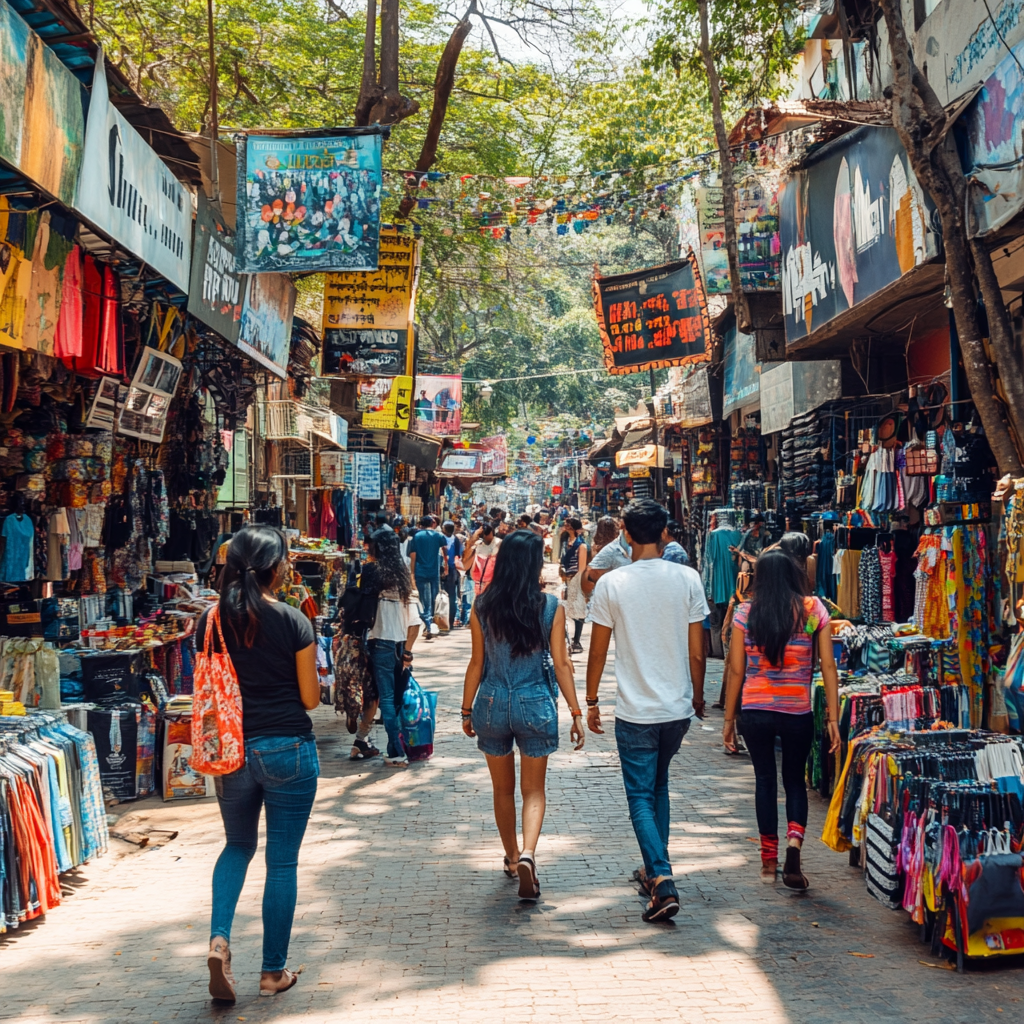
7 Powerful Insights: Why Gen Z Is Driving India’s Sustainable-Fashion Boom
1. The Demographic Power of Gen Z in India
Gen Z—those born between 1997 and 2012—now constitutes over 27% of India’s population, translating to more than 370 million potential consumers. With an estimated purchasing power exceeding $150 billion annually, their choices shape market trajectories across sectors, notably in fashion. As digital natives, they discover brands on platforms like Instagram and TikTok, where “sustainability” often goes viral through challenges and reels. This demographic’s affinity for socially responsible brands means that sustainable fashion isn’t a niche—it’s quickly becoming mainstream.
2. Defining Sustainable Fashion
At its core, sustainable fashion emphasizes a circular fashion model: garments designed for longevity, reusability, and recyclability. It champions ethical clothing practices—fair wages, safe working conditions, and zero exploitation. Materials like organic cotton, bamboo fiber, and recycled polyester are replacing conventional fabrics, reducing water consumption and carbon footprints. The slow fashion movement encourages buying fewer, higher-quality pieces, aligning perfectly with Gen Z’s values of mindful consumption.
3. Driving Forces Behind the Trend
Environmental crises—ranging from plastic pollution in the Ganges to textile waste in landfills—have spurred eco-awareness among youth. Gen Z’s social activism extends into their wardrobes: they seek brands that share data on factory emissions, water usage, and labor practices. Conscious consumerism isn’t just about buying green; it’s about supporting transparency and accountability. Movements like #MarchForOurLives and #FashionRevolution have galvanized young Indians to demand better from fashion’s supply chains.
4. Market Data & Growth Trends
According to a 2024 report by Bain & Company, India’s sustainable apparel segment is growing at a 12% CAGR, compared to 5% for conventional fashion. Tier-1 cities like Mumbai and Delhi account for 45% of sales, but Tier-2 metros are closing the gap rapidly. Online marketplaces such as EarthyThreads and EcoChic report year-on-year user growth of 60%, with conversion rates 20% higher than industry averages. This data underscores a robust market shift driven largely by Gen Z consumers.
5. Gen Z’s Shopping Behavior
While brick-and-mortar eco-boutiques thrive in metros, 70% of Gen Z sustainable purchases occur online. They gravitate toward brands offering blockchain-enabled traceability, so they can scan QR codes and verify a garment’s journey from farm to closet. Transparent pricing breakdowns—showing material costs, labor wages, and carbon offsets—resonate deeply with this cohort.
6. Key Players & Innovative Brands
Homegrown brands like No Nasties and Doodlage prioritize organic fabrics and zero-waste production. International players such as Patagonia and Reformation have localized lines, tapping into India’s demand for eco-styling. Collaborations—like H&M’s Conscious Collection in Mumbai—signal that even fast-fashion giants are pivoting to meet Gen Z’s sustainability standards.
7. Challenges & Roadblocks
Despite growth, price sensitivity remains a hurdle. Sustainable garments often cost 20–30% more than mass-market alternatives. Supply chain opacity can erode trust if brands overstate their eco-credentials (greenwashing). To maintain momentum, industry stakeholders must invest in certification, educate consumers, and subsidize sustainable innovations.
8. Role of Technology & Social Media
AI-driven tools help optimize fabric cutting patterns to minimize waste, while blockchain ensures supply chain transparency. On social media, micro-influencers—with follower counts under 50K—forge authentic connections, showcasing thrifted or upcycled outfits. Viral campaigns, such as #WearYourValues, amplify sustainable-fashion messaging, often translating into real sales spikes.
9. Government Policies & Industry Initiatives
India’s Ministry of Textiles now offers incentives for eco-friendly mills, including tax rebates and low-interest loans. Public-private partnerships—like the Sustainable Textiles Mission—fund R&D in biodegradable dyes and water-less processing. These initiatives create a regulatory environment conducive to scaling sustainable-fashion enterprises.
10. Future Outlook & Opportunities
The next frontier is a full circular economy: resale platforms, rental services, and take-back schemes are poised to explode. Venture capitalists are eyeing Indian sustainable brands—with funding rounds surpassing $100 million in 2024—indicating significant investment potential. As Gen Z’s disposable income grows, so will demand for eco-chic apparel that marries style with sustainability.
FAQs
Q1: What exactly is sustainable fashion?
Sustainable fashion refers to clothing designed, manufactured, distributed, and used in ways that are environmentally friendly and socially responsible. It encompasses ethical labor practices, eco-friendly materials, and circular-economy principles.
Q2: Why is Gen Z more eco-conscious?
Growing up with climate change in the headlines and seeing environmental damage firsthand, Gen Z is highly aware of sustainability issues. Social media platforms amplify their activism, making eco-friendly choices a core part of their identity.
Q3: How can mainstream brands adapt?
Mainstream labels can adopt transparent supply chains—using blockchain if needed—source certified sustainable materials, and launch upcycled or rental collections. Partnering with eco-startups for R&D can also accelerate their green pivot.
Q4: Are sustainable fabrics affordable?
While premium sustainable fabrics can carry a price premium, innovations like recycled polyester and regenerative cotton are driving costs down. Bulk adoption and tech-driven efficiencies are closing the affordability gap.
Q5: Which regions in India lead the trend?
Metro areas—Mumbai, Delhi-NCR, Bengaluru—currently lead in sustainable-fashion adoption. However, Tier-2 cities like Pune and Ahmedabad are rapidly catching up, fueled by local eco-initiatives and college campuses.
Q6: What impact does this boom have on the environment?
Increased sustainable-fashion adoption reduces water use by up to 50%, cuts CO₂ emissions by up to 20%, and diverts tons of textile waste from landfills annually. It also promotes fair labor practices across supply chains.
Conclusion
Gen Z’s commitment to values-driven consumption is reshaping India’s fashion landscape. By demanding transparency, embracing eco-friendly designs, and leveraging digital platforms, they’re powering a sustainable-fashion revolution that promises lasting environmental and social benefits.







